Yanagi Shinya, the great grand newphew of Yanagi Muneyoshi, continues the family legacy. Shinya is a celebrated dyer and weaver, and his work is wildly popular. He held his first exhibition in Ginza Motoji in 2021, and will hold his second this year in 2024.
We had the priviledge of speaking to Shinya Yanagi face to face, and shared with us why he chose this path.
"I have always loved making, ever since I was young."
Could you tell us a little about what you did before you got into the world of senshoku (Weaving and Dyeing)?
"After graduating high school, I went to study interior design and then went on to work at an architecture firm as a site director. I really enjoyed that work, but I was still thirsty to spend my time making with my hands. I spent a lot of time wondering what my next movements would be, and what path I could take. My father was a weaver and dyer, and I had relations working as ceramacisits, and friends working as glass artists. I was interested in each one equally, and felt I wanted to do them all, but influenced by the immediate family connection of textiles, I ultimately followed in my fathers footsteps."

(Left Image)Shinya Yanagi lived until his early childhood in the main house, which was the residence of his grandfather, Yanagi Yoshihiro
(Right Image). The sashiko curtain woven by Shinya's father, Yanagi Sou.
What age were you when you made this big change?
"I was 23! When I told my father my plans, his first reaction was not a postitive one. "I would strongly suggest you dont becoem a weaver" he said. Despite his stern advice, I was a quite stubborn, and decided to go ahead and persue my new dream anyway"
"Of course, I did begin face challanges soon enough, such as running out of , or not having enough tools. I also found it difficult working with the same materials and techniques over and over again. I started to think that maybe this was what my father had been warning me against."
What exactly do you mean by you ran out of materials and tools?
"For example, I work primarily with natural dyes, or kusakizome. This means the dye stuff I use to produce each color is usually taken from natural sources. TTwo of the dyes I often use are logwood, and hematein(boiled and solidified logwood). Despite being deriven from the same raw material, the resulting colors are slightly different. In recent years, hematein has become more and more difficult to come across. I have no choice but to substitute it with logwood, but it doesn't completely replace hematein. The number of 'similar but slightly different' colors is gradually increasing, so I've been stockpiling dyes that might become unavailable.
There are many various challanges in the work that I do, but I am glad I have chosen this path as I really enjoy it.

Yanagi dyeing silk threads
The Yanagi Family Home
The main house is a charming Japanese-style house, and each piece of furniture placed inside, each clock and vessel displayed, all seem to reflect a particular dedication. I imagine that for the Yanagi family, this is just an ordinary scene. Your grandfather, Yanagi Yoshihiro, lived here, and you were raised here,. Do you think this environment had an impact on you?
"Although it's unconscious, I think it did have an impact. I believe my sense of color was nurtured here. For example, when I think of the color brown, this is what comes to mind ."
Yanagi picks up heavy old vase by Hamada Shoji.

(Left) A work by potter Hamada Shoji, which to Yanagi defines the color brown.
(Right) Sliding door in the Yanagi family home.
Do you ever think about what mingei means, and the philosphies of your great grand uncle, Yanagi Soetsu?
"I don't really think about his philosophy, but I do think about Mingei itself. Of course, there are various interpretations, but in my view, contemporary Mingei embodies the power and energy of handcrafting."

Scroll by Yanagi Soetsu.
Originally, Mingei referred to everyday items made in villages or communities for local use. The popularization of Mingei played a role in preserving and popularizing these crafts, particularly in the face of industrialisation.
Both the word itself, and the mission of Mingei is now well known in Japan. So, I wonder if the original meaning and role of Mingei have already been fulfilled.
However, what remains unchanged throughout is the energy inherent in handcrafting. So, I don't really worry about whether what I create in my work today fits into the category of Mingei or not.
Do you feel pressure as a member of the Yanagi family working as a solo maker?
"There certainly was pressure in the past, but not anymore. In 2012, I submitted my first piece that I created myself to an exhibition at the Japan Folk Crafts Museum. As a member of the Yanagi family, I felt huge pressure, and was worried that I would not be selected.
"I was grateful to have been selected and genuinely happy about it, but it was there that I realized for the first time that being a member of the Yanagi family didn't really matter. If I kept worrying about how I was perceived by others in places where I didn't know what they were thinking, I would just exhaust myself and it wouldn't be fun, so I stopped."
 (Left) A scrap of the work submitted to the Japan Folk Crafts Museum exhibiton in 2012
(Left) A scrap of the work submitted to the Japan Folk Crafts Museum exhibiton in 2012
(Right) A weaving sample book by his grandfather, Yanagi Yoshihiro.
In your work you use many different colours, but which is your favorote?
I really like blue, I guess because its the colour of the sky.
I have only ever lived in Tokyo, where with all the towering buildings and power lines, the sky is pretty hard to catch a glimpse of. I will never forget going to Echigo Yuzawa as a student and being taken about by the vast width of the sky.

Obi by Yanagi Shinya
Is that where your inspiration comes from?
I dont know if I would call it my inspiration. I think its closer to what moves me or something im just attracted too. I have always loved the sky in the countryside. Its something thats always in the back of my mind, so maybe I unknowingly weave it into my work.

(Left)Blue thread on a loom in the studio.(Right) Yanagi keeps a scrap of each work he produces.
The blue you use is different to the blue your father used right?
"Yeah, my father used blue too, but not to the extent I do. He used it for small details or as an accent colour. For me its not uncommon ot make a piece in just blue. The blues I used from the beggining of my career have changed a lot in comparison to the ones I use now though."
Are there chemical dyes that have become difficult to procure in the last few years?
"Yes, there are. The chemical dyes I used to use had good colors, but the ones I use now tend to have a more chemical-like hue. So, I've been trying to reproduce the colors by mixing chemical dyes with plant dyes, such as dyeing them light blue and then applying yashabushi or applying shibuki, to somehow recreate the colors."
A new challenge. Using mud from Amami Oshima to dye.
We comissioned you to make a mens kimono for our store, your first time making anything for men. How did it go?
In terms of the production itself, it wasn't that different. As it was for men, I had to weave the fabric wider than I usually do, therefore I kept catching my hand in the extra fabric while weaving causing wrinkles. I had to reweave these parts over and over again. The tools used and the width of the fabric vary slightly, so at first, I caught my hand on the ear (the extra fabric at the end of the cloth), causing wrinkles, and I had to redo it several times. After redoing it about three times, I got somewhat used to the feeling and it improved."
What is different when designing for men as opposed to women?
I personally wear a lot of dark colours, so in general when I think of menswear I think darker shades. Thanks to the advice of Ginza Motoji, I also began to make some lighter colours for men too. There are a lot of differences between men and womens obi too, especially how they feel when worn, so I make sure to take that into account too.

Yanagi Shinya weaving a kimono in his studio.

Yanagi Shinya, Kaku Obi (Mens Obi)
I worked with the dyeing artisan Kanai Yuto from Amami Oshima. The fabric was dyed with Ryukyu indigo first and then overdyed with Amami mud. At first glance, it appears as a matte black, but depending on the lighting and angle,it appears a deep blue.
I first met Kanaiin 2012 when he came to Tokyo for a mud dyeing workshop. Since then, we have maintained communication. While this collaboration marks our first official project together, our prior relationship allowed me to trust him with the dyeing process, something I usually do myself.

Yanagi Shinya, Kimono dyed with both Ryukyu Ai (Indigo) and Doro (Mud) from Amami Oshima.

Motoji Keita and Yanagai Shinya at Shinyas family home.
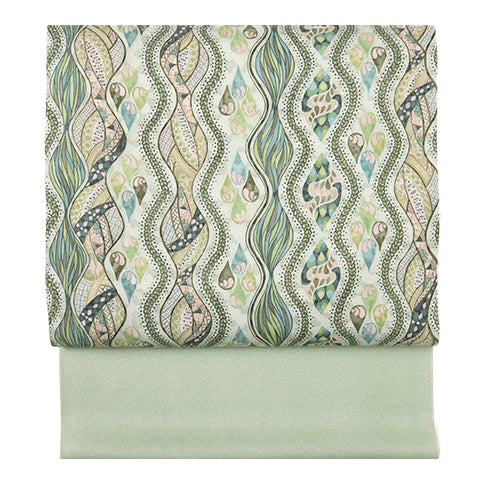 名古屋帯
名古屋帯
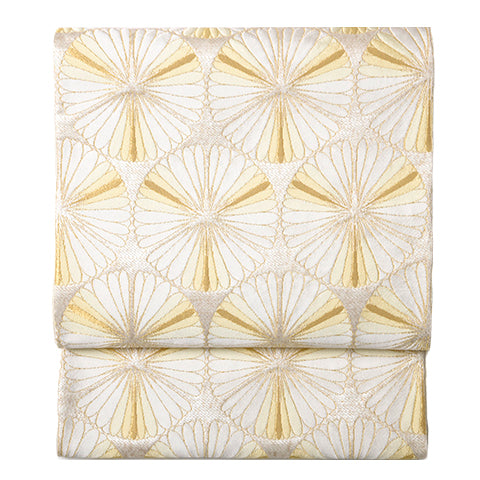 袋帯
袋帯
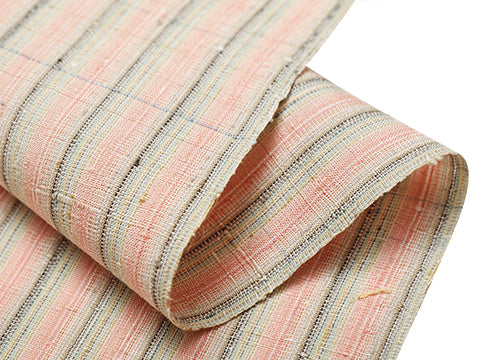 紬・綿・自然布
紬・綿・自然布
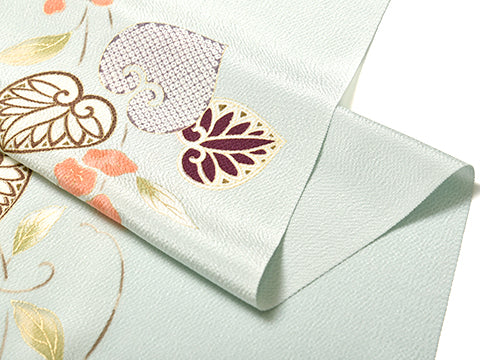 小紋・江戸小紋
小紋・江戸小紋
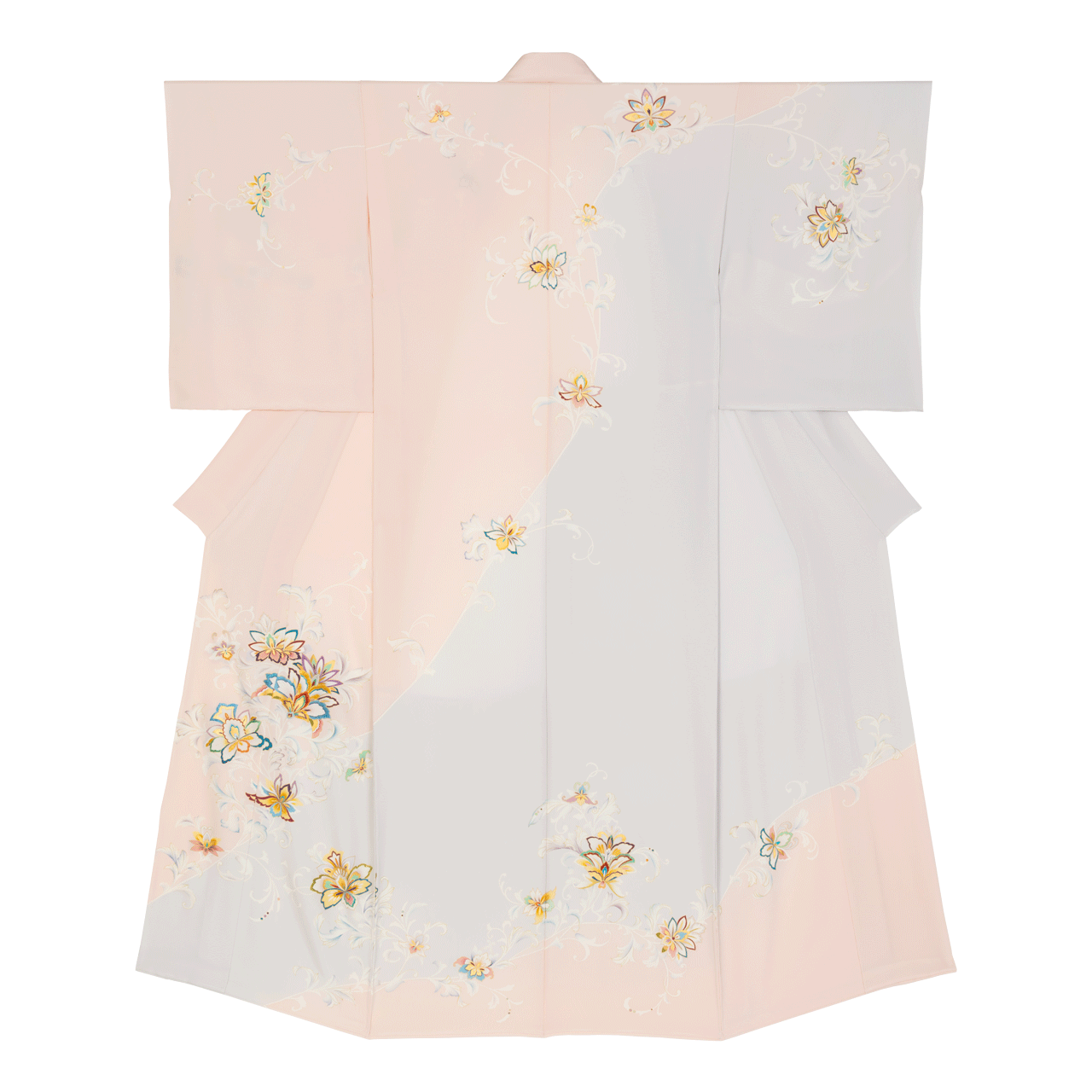 訪問着・付下げ・色無地ほか
訪問着・付下げ・色無地ほか
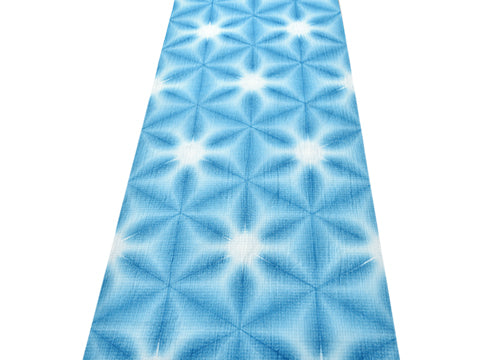 浴衣・半巾帯
浴衣・半巾帯
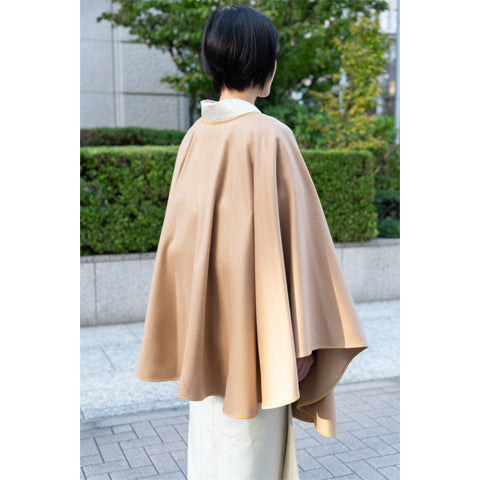 羽織・コート
羽織・コート
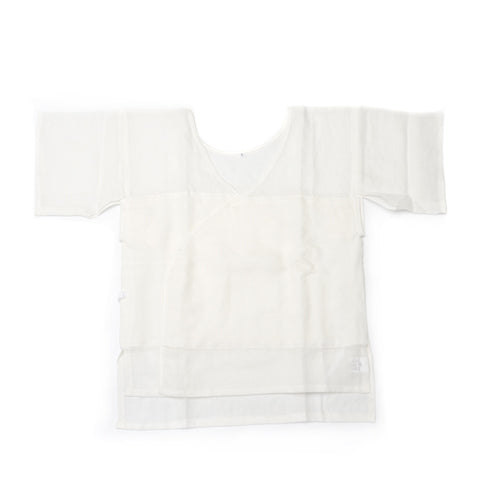 肌着
肌着
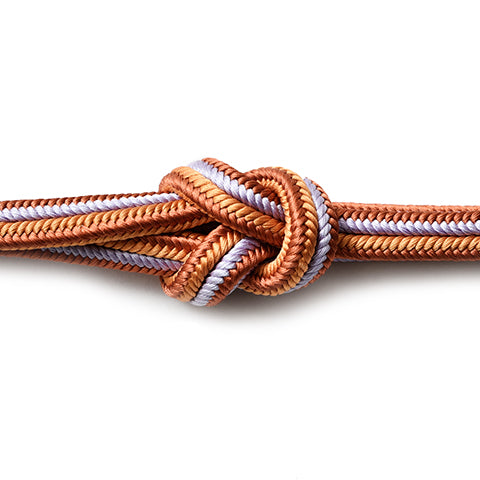 小物
小物
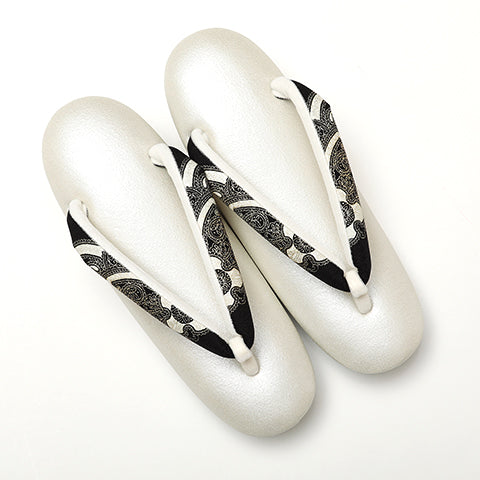 履物
履物
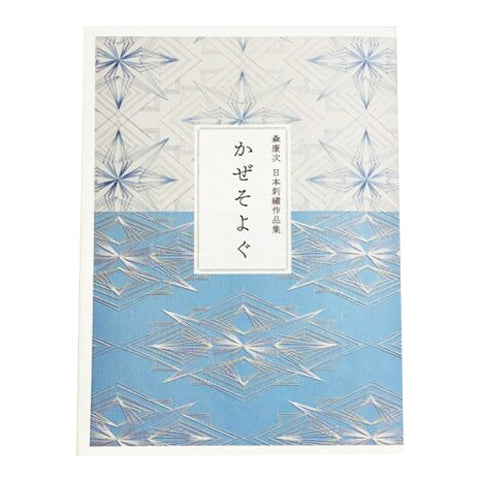 書籍
書籍
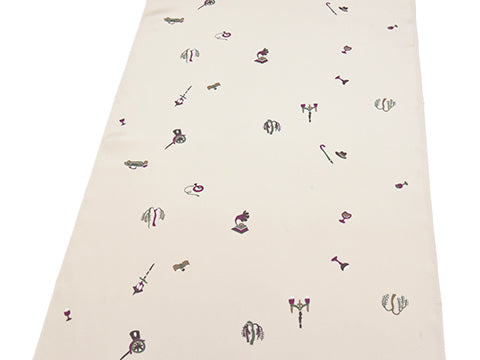 長襦袢
長襦袢
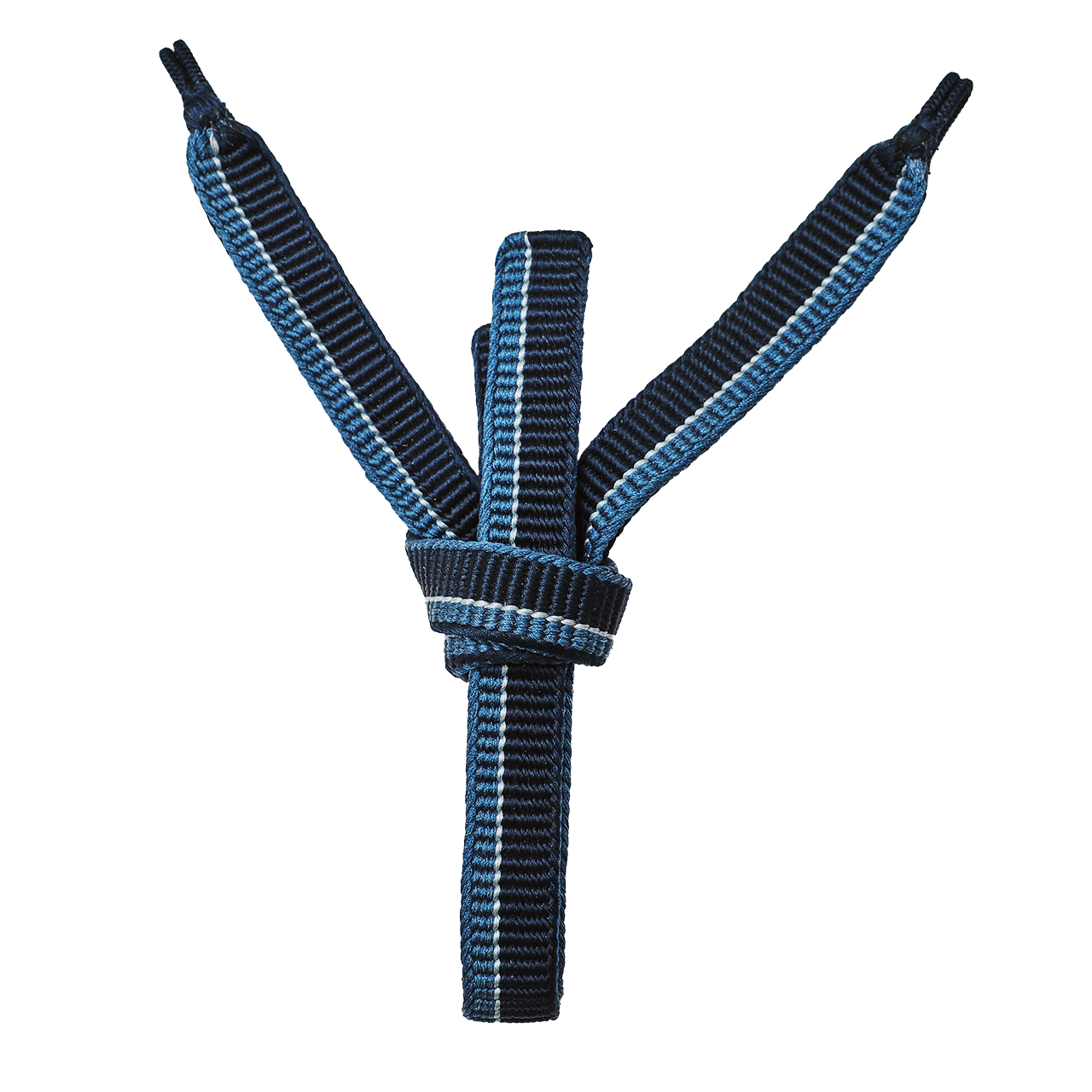 小物
小物
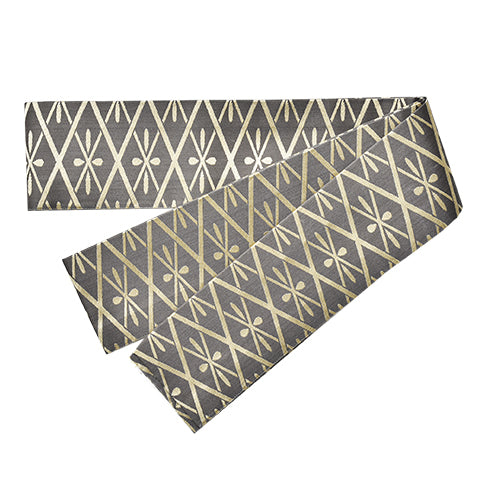 帯
帯
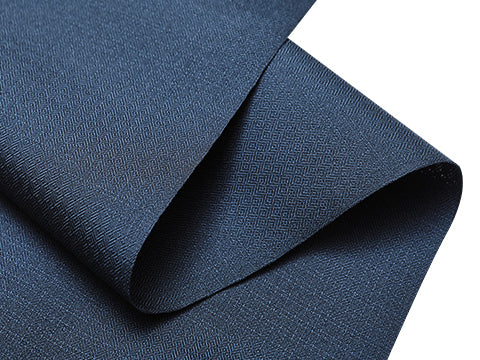 お召
お召
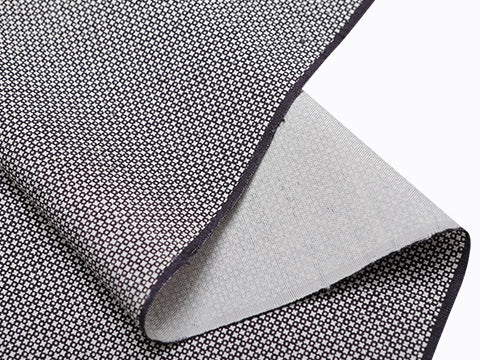 小紋・江戸小紋
小紋・江戸小紋
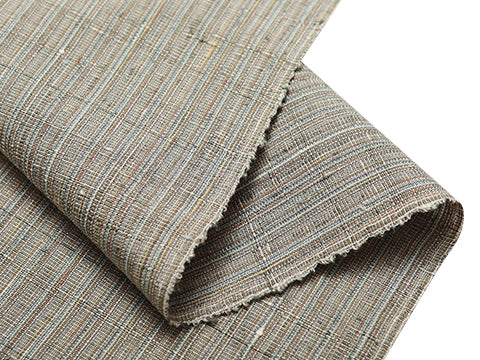 紬・綿・自然布
紬・綿・自然布
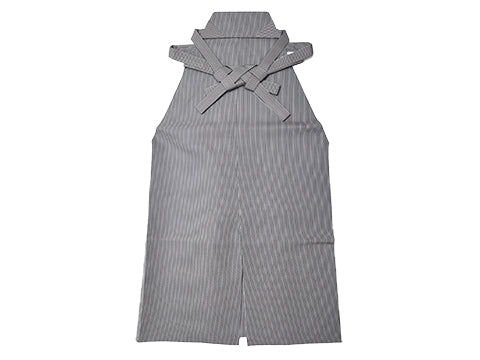 袴
袴
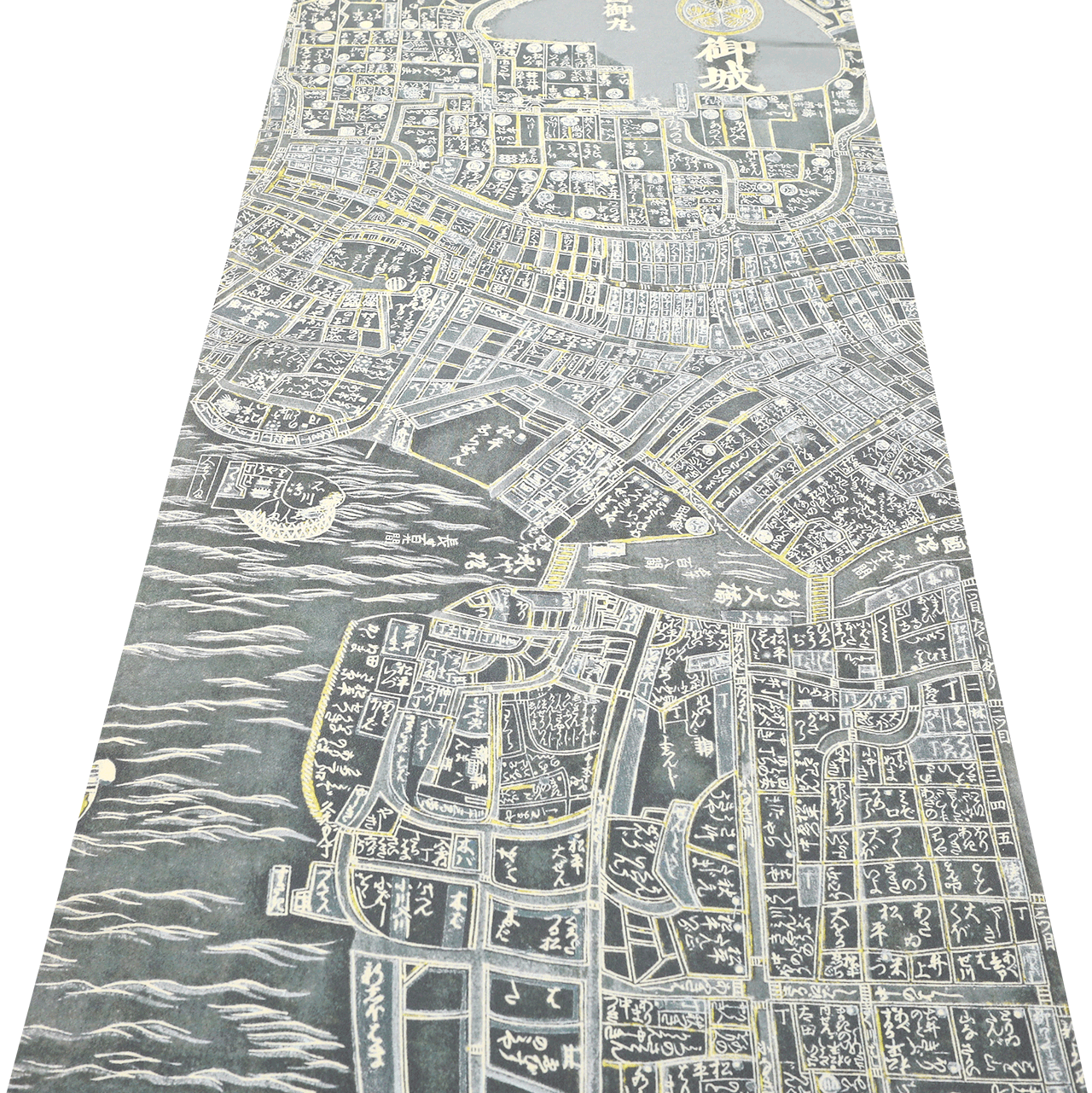 長襦袢
長襦袢
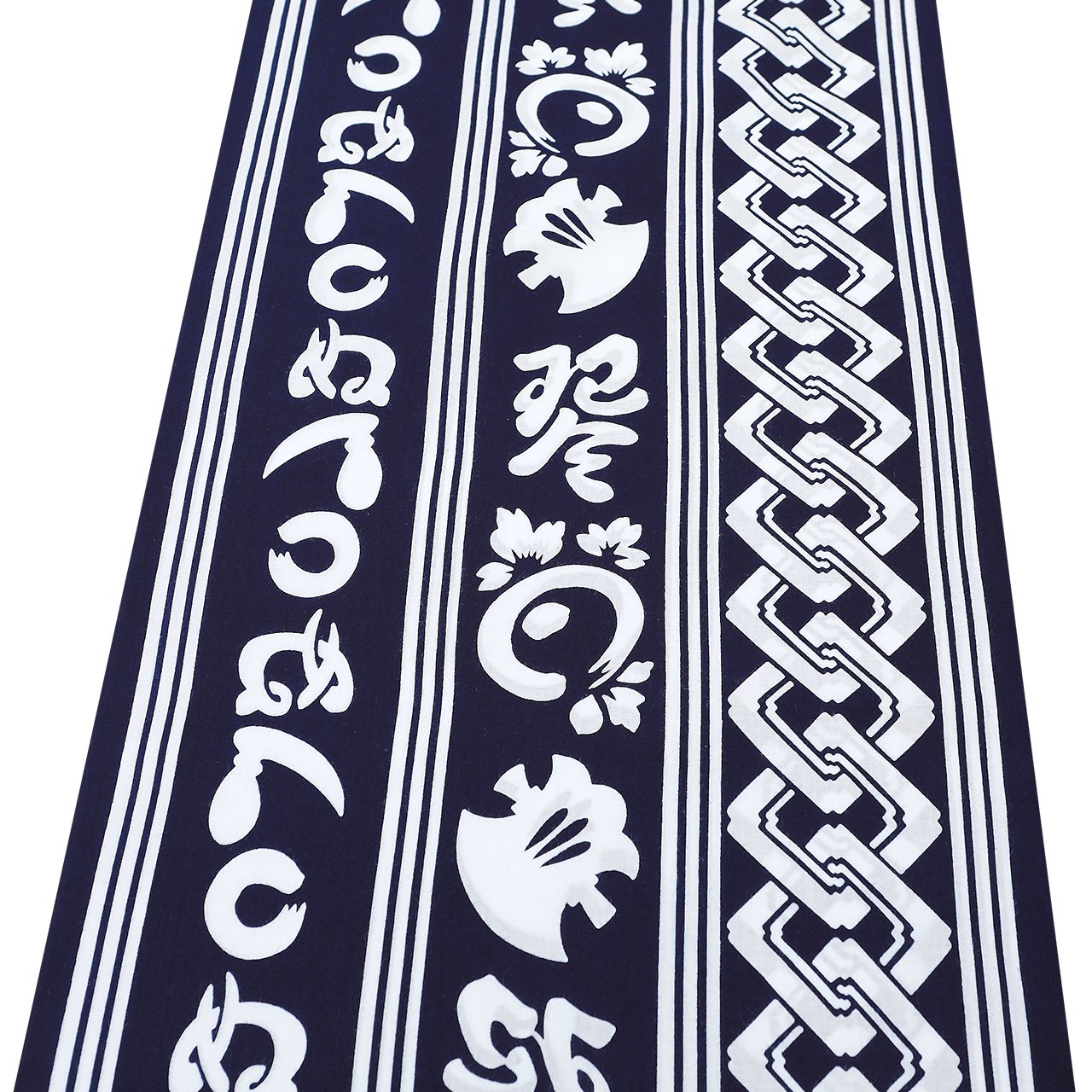 浴衣
浴衣
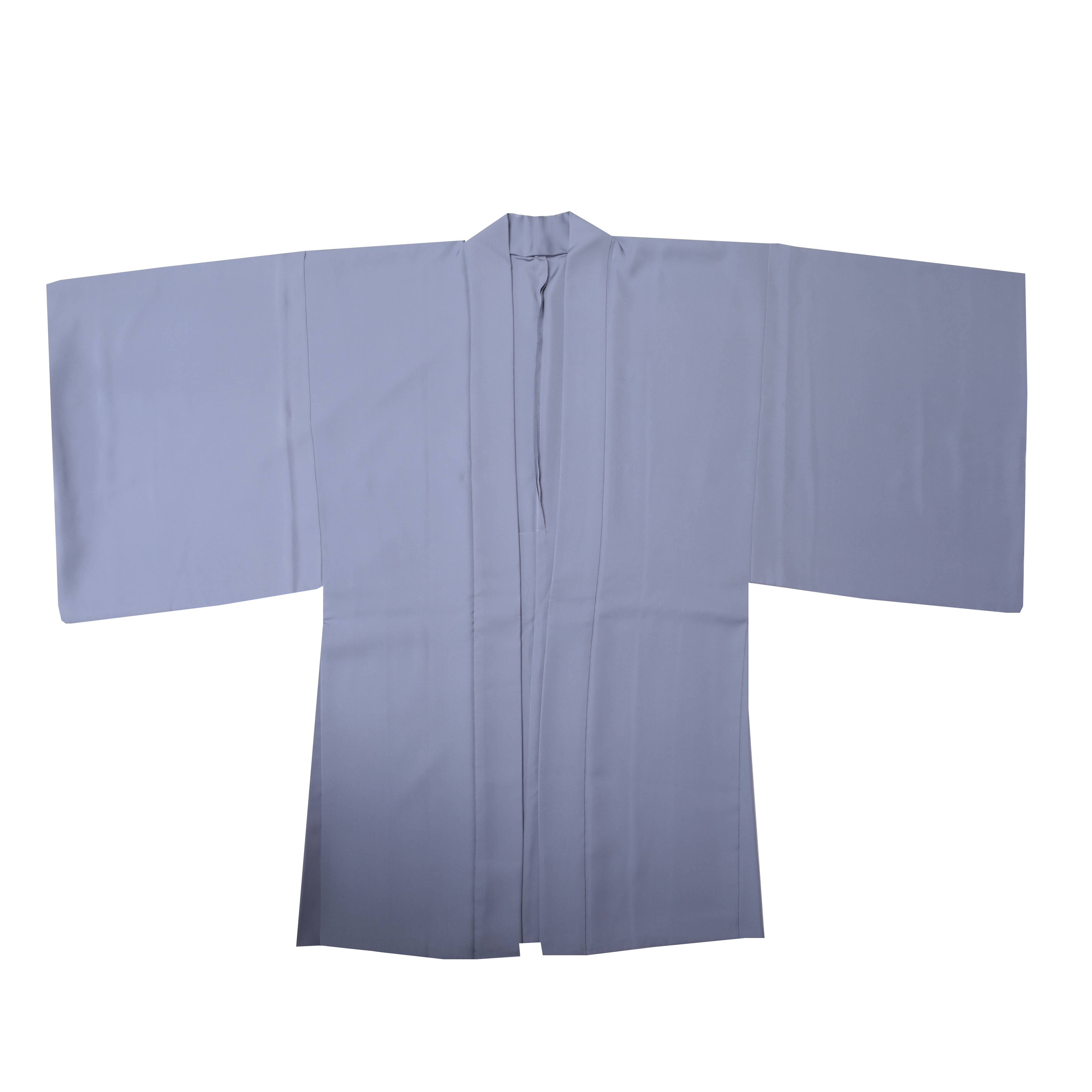 羽織・コート
羽織・コート
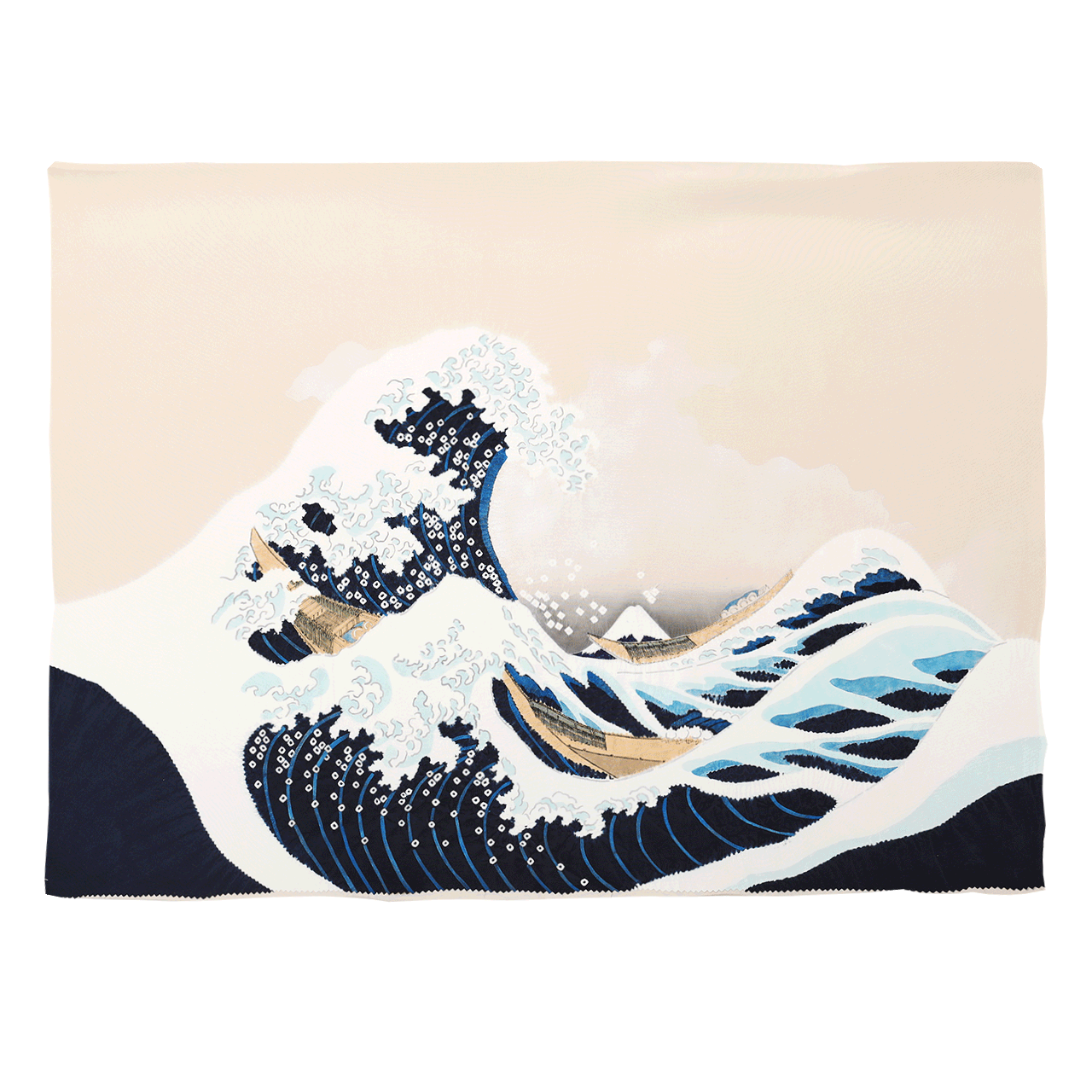 額裏
額裏
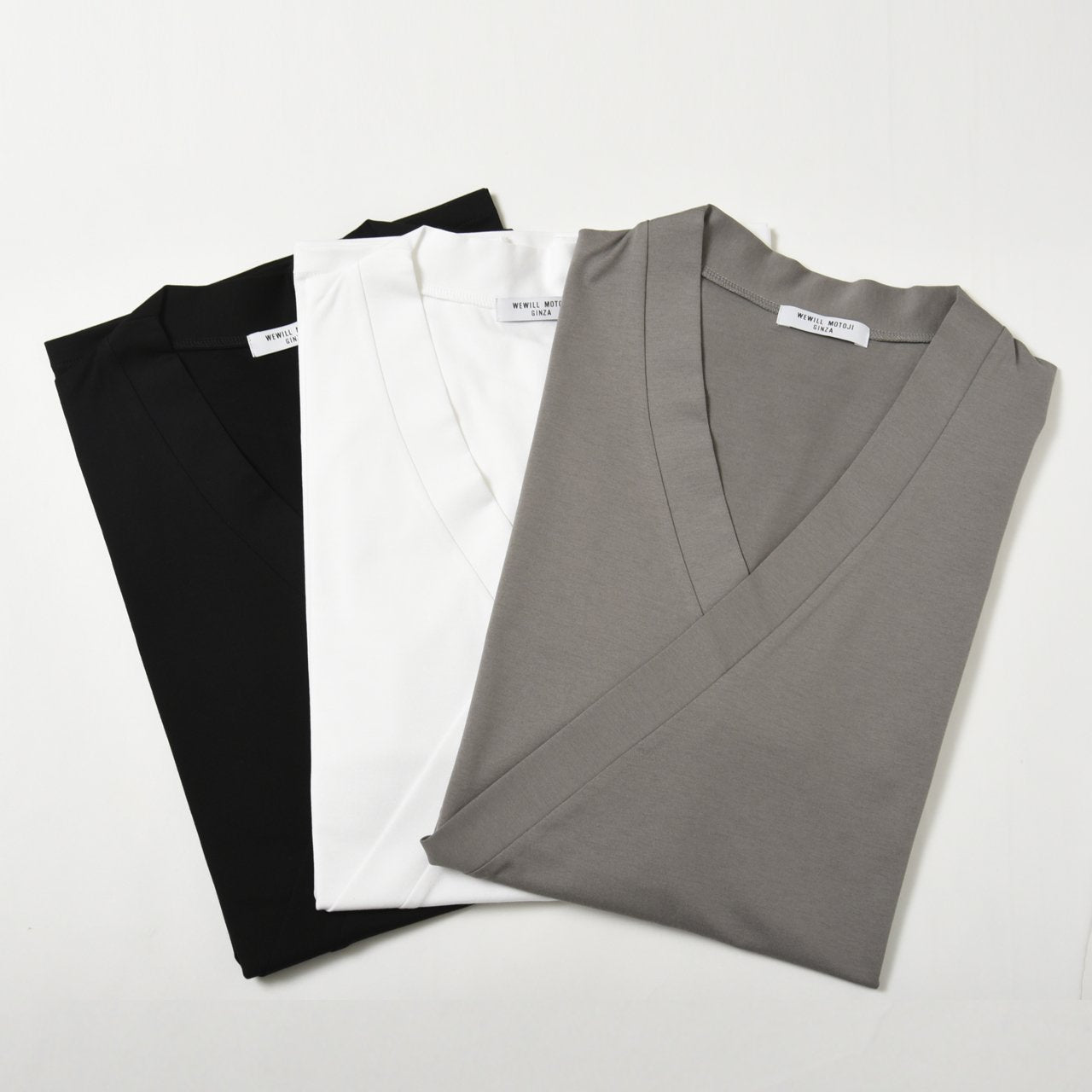 肌着
肌着
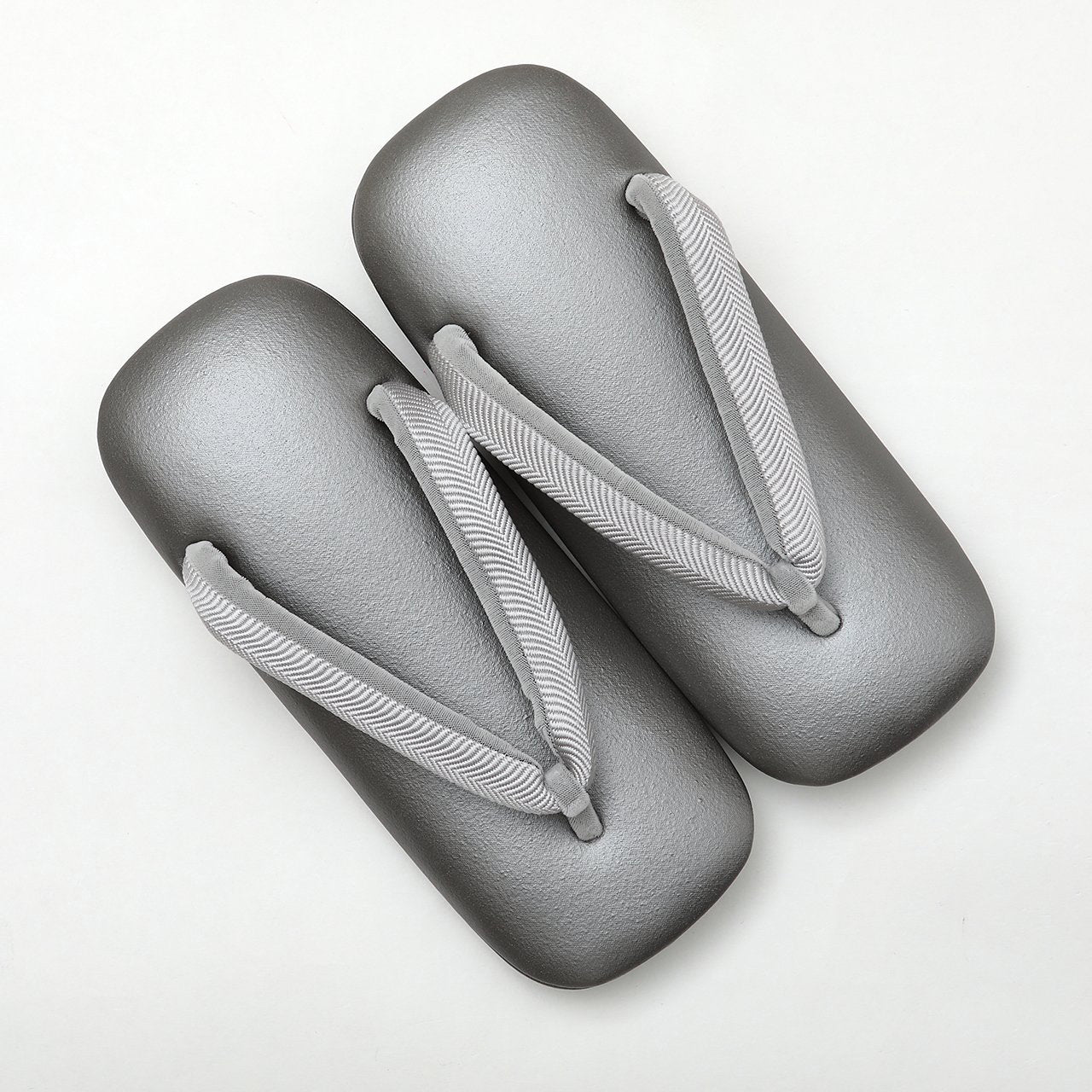 履物
履物
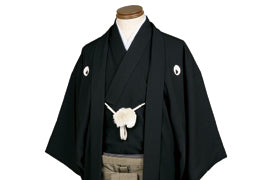 紋付
紋付
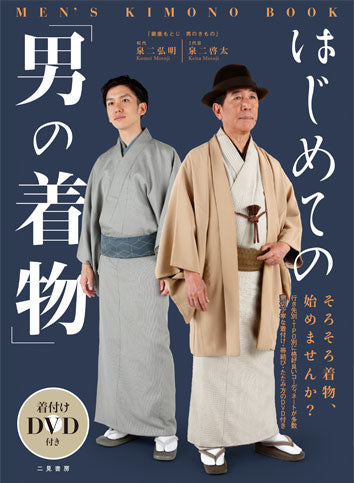 書籍
書籍

